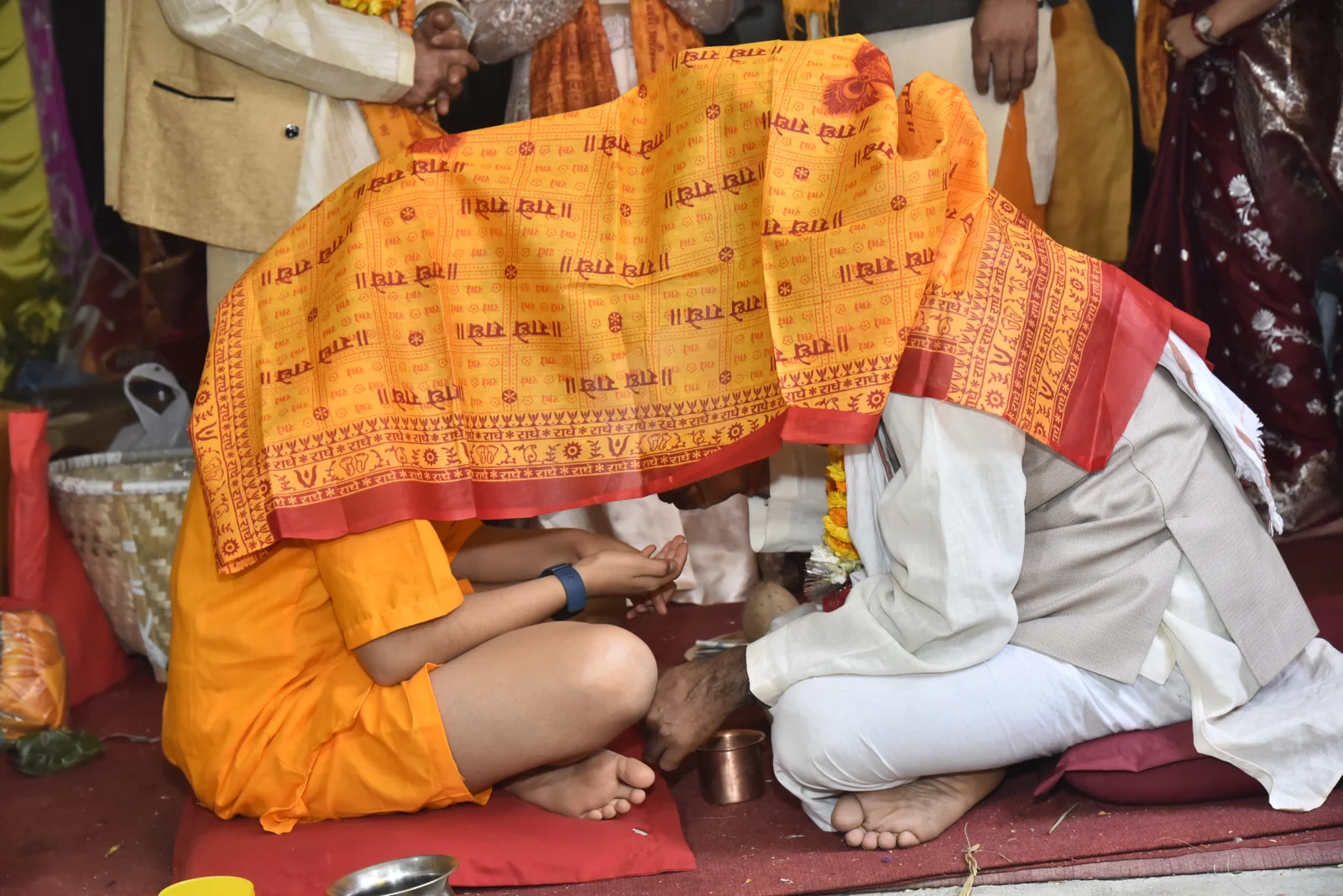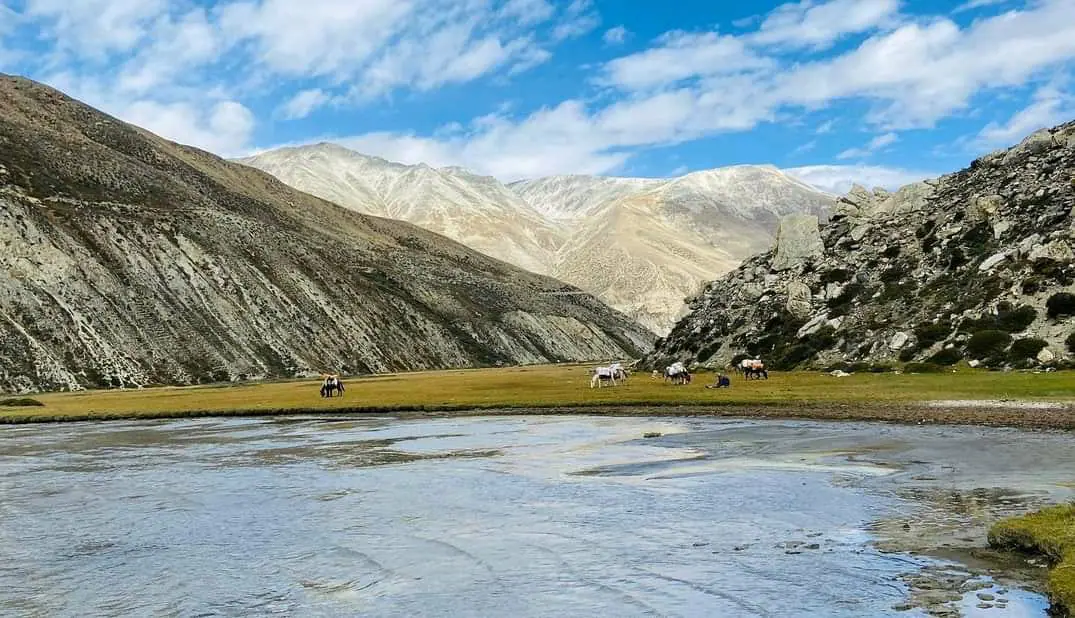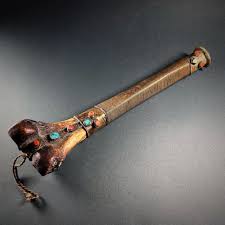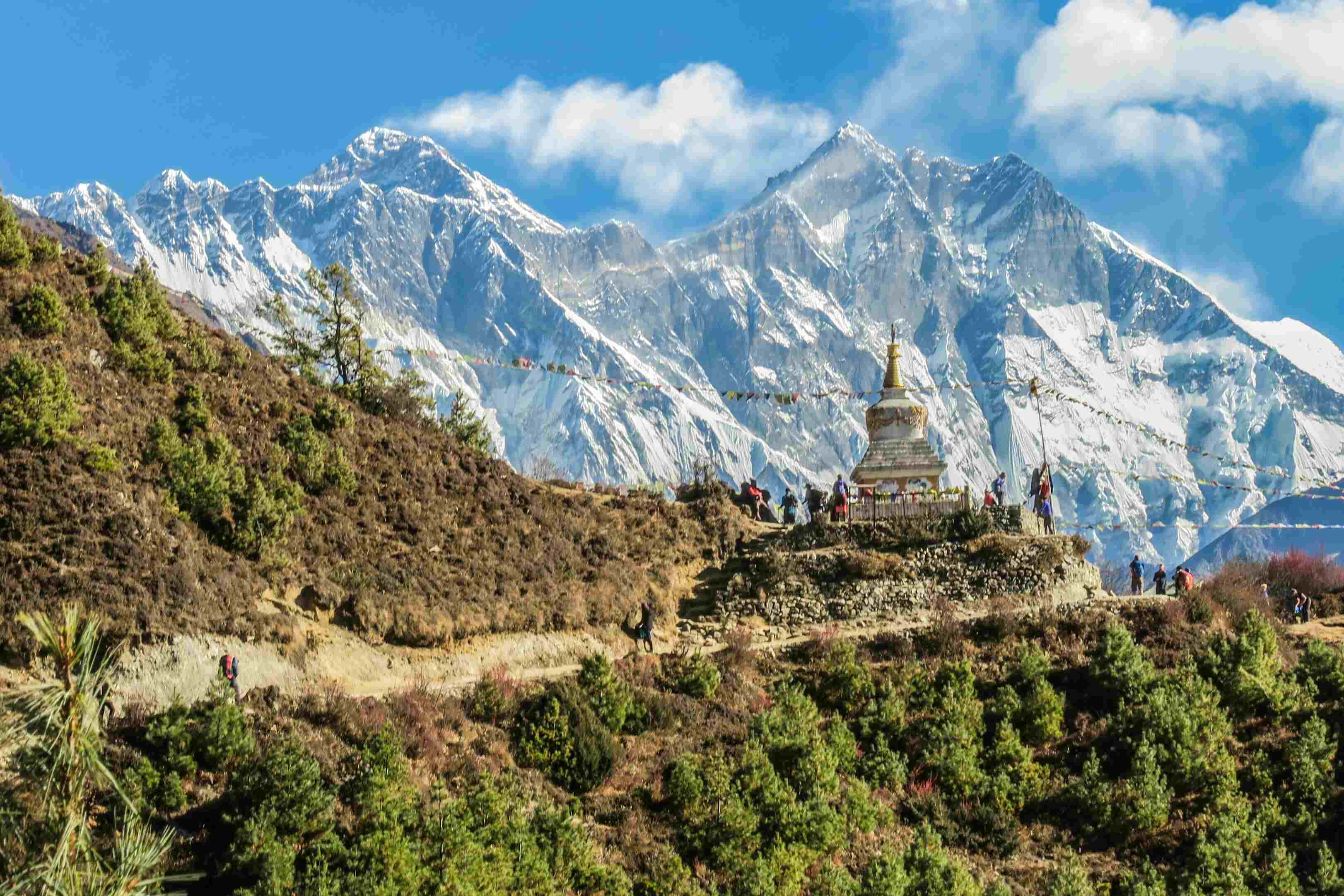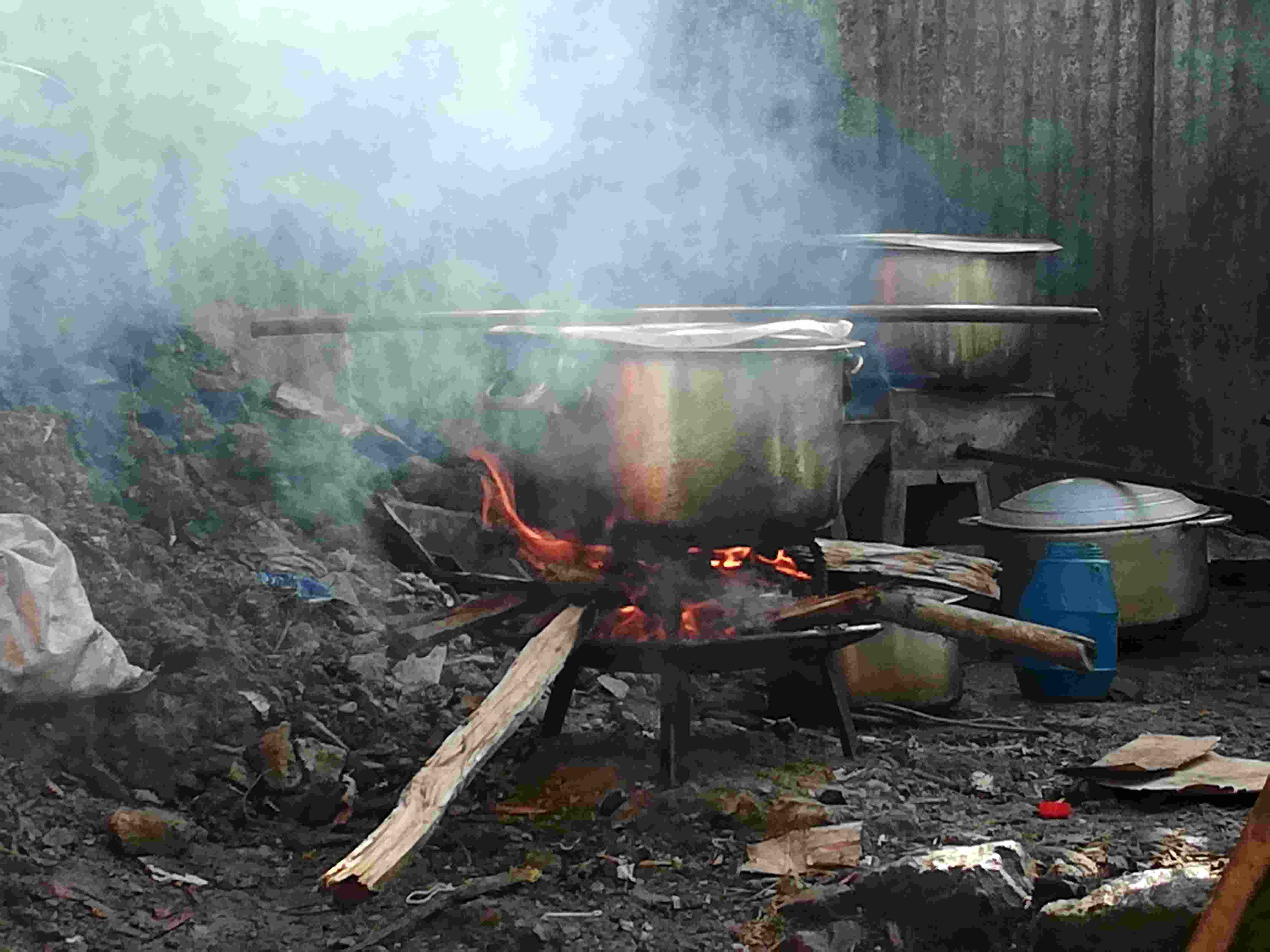Share this Article
Traditional Dhaka Weaving of Tehrathum and Palpa: The Loom of Nepali Identity
Introduction
Among the many living traditions that define Nepal's diverse cultural tapestry, Dhaka weaving stands out as a vibrant emblem of national identity, craftsmanship, and resilience. Dhaka, a handwoven cotton fabric known for its geometric patterns and bright hues, is not just cloth—it is heritage. It is proudly worn as topis, shawls, sarees, and dauras, serving both aesthetic and symbolic functions across the country.
Although Dhaka fabric has permeated every aspect of Nepali life, its roots are embedded deeply in two geographical areas: Tehrathum, a hilly district in Eastern Nepal, and Palpa, a mid-hill district in the western part of the country. Both regions boast their own unique Dhaka weaving styles, techniques, and cultural narratives, making them the twin hearts of this beautiful craft.
This article delves into the origins, development, significance, and challenges of Dhaka weaving in Tehrathum and Palpa, illuminating why this indigenous art deserves preservation and promotion in the face of modernization.
Origins and Etymology of Dhaka
The word "Dhaka" has sparked debate among historians and anthropologists. While some link its origin to the capital of Bangladesh (formerly East Pakistan), where a fine muslin known as "Dhakai Muslin" was produced, Nepali Dhaka fabric evolved distinctly, influenced by local motifs, symbolism, and spiritual elements.
Dhaka in Nepal is not just a material; it is a carrier of meaning, status, and cultural memory. It emerged in traditional societies where weaving was passed down from mother to daughter, representing both a skill and a rite of passage.
The Dhaka of Tehrathum: A Culture Woven into Threads
Ethnic Context and History
Tehrathum, located in Province No. 1, is home to the Limbu community, one of the major indigenous groups in Eastern Nepal. The Limbu people are credited with the development and evolution of the earliest forms of Dhaka in the region.
For the Limbus, Dhaka weaving was more than a profession—it was an intimate domestic art. Every woman was expected to know how to weave, and every household possessed a loom. The intricate patterns of the cloth were reflective of tribal beliefs, ancestral wisdom, and environmental symbolism. The traditional Dhaka shawl, known as "Thakuk", was worn during special rituals and social ceremonies.
Technical Aspects and Design
The Dhaka of Tehrathum is known for its fine threadwork, vivid colors, and geometrically aligned motifs that reflect local flora, fauna, and religious symbolism. Natural dyes were traditionally extracted from bark, leaves, and berries to achieve shades of red, blue, black, and ochre.
Weavers in Tehrathum use the backstrap loom, which is portable and attached to the body of the weaver. This method allows for flexibility and intimate control over the patterns being created. Weaving could take hours or even days depending on the size and complexity of the piece.
Common motifs include:
- Mechi – symbolizing rivers
- Dhunge dhara – inspired by water spouts
- Makhamali – derived from the globe amaranth flower
These patterns are often deeply personal and passed down through generations without written instruction, retaining their authenticity and sacredness.
Role in Limbu Society
In Tehrathum, Dhaka weaving once determined a woman's social status and marital eligibility. It was part of her dowry and a testament to her domestic skills. Men wore Dhaka topis and waistbands during community feasts and funerals, while women wore Dhaka shawls and blouses during celebrations and dances such as Dhan Nach.
The Dhaka of Palpa: Innovation and Commercialization
Emergence and Migration of Weaving Techniques
While the art of weaving existed in Palpa for centuries, it was during the mid-20th century that Tansen, the district headquarters of Palpa, emerged as a major hub for Dhaka weaving. Migrants from Tehrathum and the eastern hills are believed to have introduced the initial techniques, which were then adapted to suit the Palpali aesthetic.
Palpa Dhaka gained prominence for its refined finish, contemporary patterns, and business-oriented production, transforming the fabric from a cottage art into a thriving local industry.
Institutional Support and Industrialization
The turning point for Palpa Dhaka came with the establishment of weaving centers and cooperatives such as the Palpali Dhaka Udhyog, initiated in the 1960s. These centers trained weavers, mostly women, in modern designs, loom operation, and dyeing processes. Over time, Palpa Dhaka became synonymous with elegance and innovation.
In contrast to the backstrap loom of Tehrathum, Palpa utilizes frame looms for greater production capacity and uniformity. The looms allow artisans to create large-scale products such as:
- Dhaka sarees
- Kurta fabrics
- Curtains
- Tablecloths
- Bags and accessories
Patterns and Products
Palpa Dhaka incorporates both traditional and modern motifs. Some of the most recognizable include:
- Chandramukhi (moon-faced) patterns
- Flowered chains
- Abstract geometry
The colors are often more pastel and muted compared to Tehrathum’s bold palette, appealing to both urban consumers and international markets.
Gender, Economy, and Empowerment
In both Tehrathum and Palpa, Dhaka weaving has been a significant source of income and empowerment for women. In rural areas where economic opportunities are limited, weaving offers flexible working hours, skill-based employment, and financial independence.
Weaving cooperatives run by women have flourished in recent decades, allowing them to take leadership roles in production, marketing, and training. Additionally, the increasing demand for Dhaka products in cities and abroad has opened up channels for exports, especially to countries with Nepali diaspora such as the United States, UK, Japan, and Australia.
Yet, women weavers still face challenges like low wages, lack of health insurance, and poor access to markets without intermediaries. There is an urgent need to formalize the craft industry to ensure sustainability and fair compensation.
Dhaka in National Identity and Ceremonial Use
The symbolic value of Dhaka reached its peak when it became the design standard for the Nepali national topi. Worn by dignitaries, government officials, and during state ceremonies, the Dhaka topi is a powerful cultural icon. It bridges the hills and the Terai, the modern and the ancient, unifying the nation under one cloth.
Dhaka is also a favorite among designers for creating ethnic wedding wear, cultural costumes for school children, and diplomatic gifts. Its adaptability has allowed it to find a place in fashion runways and international handicraft fairs, without losing its cultural roots.
Challenges to Preservation
Despite its success, the traditional Dhaka weaving culture faces numerous existential threats:
1. Mass Production and Machine Looms
Cheaper machine-made fabrics from India and China have flooded the Nepali market. These imitations often replicate Dhaka patterns but lack the cultural integrity and craftsmanship of the original.
2. Declining Interest Among Youth
Weaving is labor-intensive and underpaid, leading many young people in Tehrathum and Palpa to seek alternative professions or migrate abroad. The absence of apprenticeships and the lure of urban lifestyles have resulted in declining transmission of traditional knowledge.
3. Lack of Intellectual Property Rights
Dhaka patterns are frequently copied without credit or royalties. Without legal protection under Geographical Indication (GI) laws, the communities that have nurtured this art form continue to be economically exploited.
4. Access to Raw Materials
The availability of quality cotton threads and natural dyes has diminished due to market dependency and climate change. Many weavers have shifted to synthetic alternatives, affecting the texture, quality, and authenticity of the final product.
Revival, Innovation, and the Way Forward
To counter the challenges, several efforts are underway:
- Cultural Documentation Projects: Museums and cultural organizations are working to archive Dhaka patterns, oral histories, and weaving techniques before they vanish.
- Design Interventions: Collaborations between artisans and contemporary designers have created modern silhouettes using traditional Dhaka, appealing to urban and global markets.
- Skill Training and Youth Engagement: NGOs and government bodies are investing in youth training programs to preserve the continuity of the craft.
- Geographical Indication (GI) Registration: Activists are lobbying for Dhaka fabric, especially from Palpa and Tehrathum, to be registered as a GI product, securing its intellectual and economic rights.
- Digital Marketplaces: Online platforms like Etsy, Daraz, and Instagram have helped artisans sell directly to consumers, bypassing exploitative middlemen.
Conclusion
The traditional Dhaka weaving of Tehrathum and Palpa is not merely an economic activity—it is a cultural heritage that embodies the soul of the people, their aesthetic sensibilities, and their history. It is a story written in warp and weft, encoded in patterns that speak of ancestral memory, community life, and craftsmanship.
In a rapidly changing world, where machine-made fabrics threaten to erase indigenous arts, Dhaka stands resilient. But resilience alone is not enough. It needs advocacy, policy support, youth engagement, and consumer awareness.
Only then can the vibrant threads of Tehrathum and the refined patterns of Palpa continue to weave themselves into the ever-evolving identity of Nepal.
Categories:
Travel & Tourism
,
Culture & Traditions
,
Adventure Activities
,
Nature & Wildlife
,
History & Heritage
,
Lifestyle & Local Life
,
Health & Wellness
Tags:
asdasd
,
Thamel
,
nagi gumba
,
sundarijal
,
dashain
,
festival of nepal
,
bada dashain
,
traditional food
,
traditional-drink
,
murchunga
,
nepalese music
,
traditional instruments


